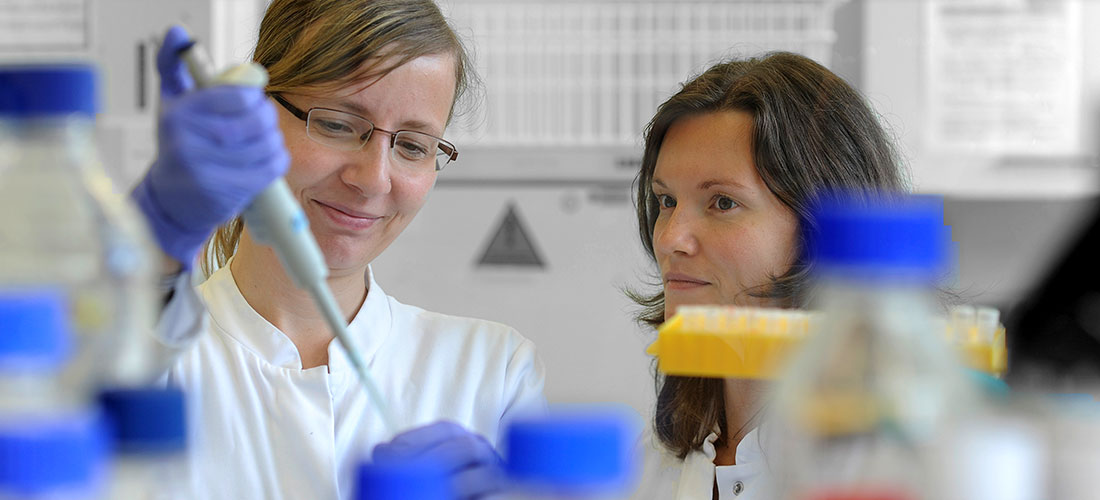Prof. Dr. phil. Walter Birchmeier

Signal Transduction in Development and Cancer
Max-Delbrück Center for Molecular Medicine (MDC)
Robert-Rössle-Str. 10
13092 Berlin
E-Mail: wbirch(at)mdc-berlin.de
https://www.mdc-berlin.de/birchmeier
University Education
- 1966-1970 Studies of Biology and Biochemistry, Diploma, Universität Zürich, Switzerland
- 1970-1973 Ph.D. Studies at the Institute of Biochemistry, Universität Zürich, Switzerland
- 1973 Ph.D., Universität Zürich, Switzerland
Professional Experience (selection)
- 1974-1977 Postdoctoral research fellow at Cornell University, USA, the Biocenter Basel, Switzerland and UCSD, USA
- 1978-1981 Oberassistent at ETH Zürich, Switzerland
- 1982-1988 Junior group leader at the Max Planck Institute Tübingen
- 1988-1993 Full Professor (C4), Universitätsklinik Essen
- 1993- Group leader (C4) at the MDC
- 1996- University Professor (C4-S) at the HU Berlin/Charité
- 2004-2008 Scientific Director of the MDC
Research Fields
- i) Main field: Role of Wnt/β-catenin and HGF/Met in Development and Cancer
- ii) Other fields: Metastasis
- iii) Current research interest: Cancer Stem Cells
Most important Awards, Grants or Scientific Achievements
- 1990 Award for Cancer Research, Wilhelm-Warner-Stiftung, Hamburg
- 1992 Meyenburg-Award for Cancer Research, Heidelberg
- 1999 German Cancer Award (Deutscher Krebspreis), German Cancer Society
Selected References
- Niogret, C., Miah, S.M.S., Rota, G. et al. Shp-2 is critical for ERK and metabolic engagement downstream of IL-15 receptor in NK cells. Nat Commun 10, 1444 (2019).
- Ruess, D. A., Heynen, G. J., Ciecielski, K. J., Ai, J., Berninger, A., Kabacaoglu, D., Görgülü, K., Dantes, Z., Wörmann, S. M., Diakopoulos, K. N., Karpathaki, A. F., Kowalska, M., Kaya-Aksoy, E., Song, L., van der Laan, E., López-Alberca, M. P., Nazaré, M., Reichert, M., Saur, D., Erkan, M. M., … Algül, H. (2018). Mutant KRAS-driven cancers depend on PTPN11/SHP2 phosphatase. Nature medicine, 24(7), 954–960.
- Valenti, G., Quinn, H. M., Heynen, G., Lan, L., Holland, J. D., Vogel, R., Wulf-Goldenberg, A., & Birchmeier, W. (2017). Cancer Stem Cells Regulate Cancer-Associated Fibroblasts via Activation of Hedgehog Signaling in Mammary Gland Tumors. Cancer research, 77(8), 2134–2147.
- Hellmuth, K., Grosskopf, S., Tung Lum, C., Wuertele, M, …, Kries v., J.P, Rosário, M., Rademann, J., and Birchmeier, W. (2008). Specific inhibitors of the protein tyrosine phosphatase Shp2 identified by high-throughput docking. Proc Natl Acad Sci USA 105, 7275.
- Brembeck, F.H., Schwarz-Romond, T., Bakkers, J., Wilhelm, S., Hammerschmidt, M., and Birchmeier, W. (2004). Essential role of BCL9-2 in the switch between beta-catenin’s adhesive and transcriptional functions. Gene Dev 18, 2225.
- Hülsken, J., Vogel, R., Erdmann, B., Cotsarelis, G., and Birchmeier, W. (2001). Beta-catenin controls hair follicle morphogenesis and stem cell differentiation in the skin. Cell 105, 533.



